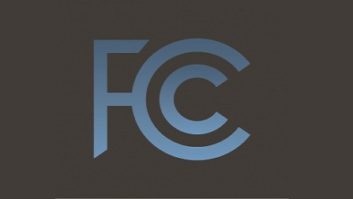(click thumbnail)Fig. 1
(click thumbnail)Fig. 2
(click thumbnail)Fig. 3What a season of storms! Severe damage to both sites and equipment.
For example, George Seifert reports a fire that occurred at one of the ATU shacks for stations WONE, WARK and WQMX in Akron, where he is the assistant engineer.
Officials had no idea how the fire started, but storms usually are suspected.
If your AM parameters look wrong, maybe take a ride to the side and perform a thorough inspection.
Reach George at [email protected]



. . .
Scott Todd at KKMS in Richfield, Minn., writes that lightning does some strange things.
In June the station took a direct hit. In Fig. 1, the feed from the static drain to the bowl insulator was vaporized. The copper tubing leading from the Delta toroids was bent, as shown in Fig. 2, and its connection to the bowl insulator was also vaporized. Surprisingly, the Delta toroids survived.
A bolt of lightning provides an enormous magnetic pulse, and a device like a coil that will store such an energy pulse basically collapses under the tremendous field. Fig. 3 shows the result of Mother Nature’s fury.
Storm damage isn’t just contained inside the coupling networks or phasor. Fig. D shows a waterlogged office. At first, one would expect heavy rain causing this flood. But lightning got to the building’s water main. The pipe ran through a suspended ceiling, running next to a hanger. The lightning punched a hole in the pipe, as shown in Fig. E, causing the indoor flood.
Scott says there are a lot of lessons to be learned from such a disaster.
(click thumbnail)Fig. 4
(click thumbnail)Fig. 5
First and foremost, know the location of the water main cutoff valve. And just in case the engineer isn’t around when things get messy, mark the valve so other staff can find it. In older buildings or transmitter facilities, the valve may be outside or associated with a water meter. Again, mark the location, making sure the valve cover is accessible and not buried in dirt, weeds or bushes. It will save your hide when an emergency like this occurs.
Don’t know where the water valve is? Get the bill from the business manager and have the utility people meet you at the site. Then mark the location, and post its description inside the building.
Cleaning up after a waterlogged experience? Contact a company like Serve-Pro. They may trade their services. You, the engineer, have more important things to do than vacuuming water from carpets. Delegate the task to a company with the appropriate tools. Besides, most good business insurance will pay for this kind of loss. Your talents are best spent investigating equipment damage and correcting it.
Bring along a disposal flash camera or digital camera to document your findings. In some cases, it’s necessary to clean up the damage to get the equipment on the air. Taking pictures of the damage before you correct it can be invaluable when filing insurance claims.
Reach Scott Todd at [email protected].
Regardless of the emergency, you and your department probably will be the focal point. Work out disaster strategies in advance. Compile a list of contactors: plumbers, HVAC and service people. Be sure to include the utility companies, local fire, police, sheriff and insurance claims agent.
Being prepared isn’t just a slogan. For the engineer, it’s a way of life.
Submissions for this column are encouraged, and qualify for SBE recertification credit. Fax your submission to (703) 323-8044, or send e-mail to [email protected]












